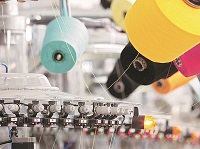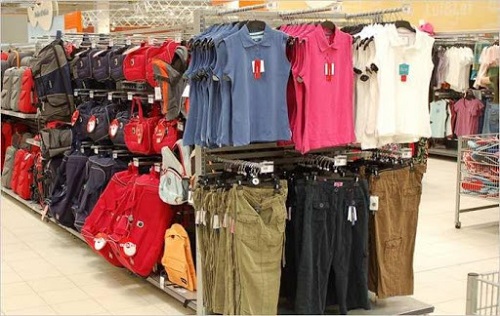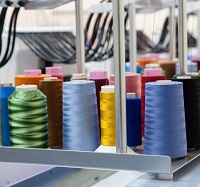FW
Forgoing the conventional September runway show, Burberry’s Spring/Summer 2021 collection will be ‘an immersive show experience set in the British Outdoors’.
A day before the beginning of the London Fashion Week, i.e., 17 September, the British luxury label will live stream the show for all who would like to partake whilst the actual catwalk will only consist of the Burberry team and the models. The show will adopt the open air concept that is expected to reduce the risk of catching the illness considerably.
Like Burberry, Dior plans to stage its Cruise 2021 collection, earlier slated to be held in May, without audience on 22 July in Lecce, Italy. Both luxury giants are on the consensus that luxury requires connect with the audience and hence needs to be showcased.
A study by the UK charity WRAP reveals, 67 million clothing items — mostly T-shirts, blouses, sweaters and hoodies — and as many as 22 million pairs of shoes could be discarded by UK homes as lockdown eases. A total of 184 million textile items have been earmarked for disposal, WRAP said, with people on average discarding 11 items of clothing during lockdown. Most will go to charity shops, which have slowly begun to reopen with social distancing measures in place. Other items have already been — or will be — headed straight to the landfill.
WRAP, a not-for-profit organization that works with governments, businesses and individuals to promote sustainability, undertook its research in late May, surveying 2,422 UK adults aged 18 and over. The report, titled “Clothing Behaviors During COVID-19 Lockdown,” prepared by Sarah Gray, said 41 per cent of UK citizens discarded textiles during the COVID-19 lockdown, mostly clothing, shoes, footwear, bedding, bags, accessories and household textiles. Some 57 percent of the items earmarked for disposal had been set aside at home until the end of lockdown. The remaining 43 percent of items had already been tossed away. The survey said 36 per cent people used the “general rubbish,” or household garbage, to get rid of one or more of their items.
South Asia Textiles, a leading Sri Lankan textile manufacturer and HeiQ Materials AG, a Swiss -ased global leader in textile innovation are collaborating to produce a specially treated fabric to be used for masks exported to the US. South Asia Textiles, a subsidiary of Ambeon Holdings PLC, specializes in knitting, dyeing, finishing, printing, brushing, sueding and preshrunk fabric for leading global brands such as Victoria Secret, Next, Marks & Spencer, Tesco, Calvin Klein, Decathlon and Adidas. On the hand, HeiQ specializes in research, manufacturing and marketing of high-quality, high-performance textile finishing.
The Swiss-based material science organization’s latest innovation, HeiQ Viroblock is an antimicrobial / antibacterial / antiviral textile technology specially engineered to work against enveloped viruses, such as influenza viruses and human coronaviruses.. Fabrics treated with HeiQ Viroblock treated fabrics show over 99.99 per cent reduction in SARS-CoV-2 viruses after 30 minutes. In the case of Sendai viruses, over 99.2 per cent viruses are deactivated within two minutes based on modified ISO 20743 method.
In its recent annual Global Citizenship & Sustainability Report for fiscal year 2020, Ralph Lauren highlights its goals for the future. The brand recently joined forces with WWF to drive progress toward the company’s goal of reducing water use across its operations and value chain by 20 percent by 2025. Within the first year, this will include an analysis of the company’s water use, identification of areas of water risk and strategies to decrease consumption and address water quality and other water outcomes across its value chain.
The brand also aims to set a science-based target to reduce emissions across the company and value chain by 30 percent by 2030, provide 100 per cent renewable energy to power owned and operated offices, distribution centers and stores by 2025, achieve gender parity in its leadership ranks, with women holding 50 percent of vice president level and above positions at the company, score 100 percent on the Human Rights Campaign Corporate Equality Index, in recognition of the company’s work toward ensuring an equitable, inclusive workplace for LGBTQ employees, disclose the racial and ethnic makeup of its global employee base, with additional recent commitments made to reflect the communities the company serves in its leadership across the entire organization, and donate through the Ralph Lauren Corporate Foundation and its business, more than $7 million toward causes including cancer care and prevention, LGBTQ equity and inclusion and clean water access for undeserved communities,, and pledge an additional $10 million through the Ralph Lauren Corporate Foundation toward COVID-19 relief.
With rising number COVID-19 cases in the Limbayat region of Surat, the Federation of Surat Textile Traders Association (FOSTTA) has decided to not allow the delivery of finished and unfinished fabric parcels from the powerloom units and textile mills for one week starting June 22. However, the parcels containing value addition of the fabrics will be allowed in the markets.
The representatives have decided to keep the markets operational from 9 am to 7 pm by strictly banning the entry of workers and others coming from the containment zones and hotspot areas. The traders will have to strictly follow social distancing rules and compulsory checking of the people coming into the market with thermal guns.
About 40 per cent of the markets in the region have become operational .FOSTTA has also banned the chewing of tobacco and smoking in the market and that the management will fine those caught violating this rule.
Manoj Agarwal, the president of the association also said that the workers in the markets and textile traders arriving from other states will have to remain in the home quarantine strictly for 14 days. There will be no entry of children below 10 years and senior citizens above 65 years in the textile markets.
Italian fashion label Fendi will organize Milan Fashion Week from September 22-28. The show will open with a collection from Fendi. The show will be a physical event with limited number of guests. On June 20, Fendi organized a concert entitled "Fendi Renaissance - Anima Mundi" at the Palazzo della Civiltà Italiana. The event featured the musicians of the Accademia di Santa Cecilia and violinist Anna Tifu, who performed "L'Estate" ("Summer") from Antonio Vivaldi's "Four Seasons" on the steps, under the arcades and on the roof of the famous monument.
On June 24, the Italian house also presented a new capsule "California Sky" created in partnership with Los Angeles-based artist Joshua Vides. A teaser unveiled by Fendi offering a glimpse of the new collaboration shows that it will feature ready-to-wear and leather pieces marked by black and white motifs that are typical of the contemporary artist.
The new creations can be found in Fendi's online store at Fendi.com. The brand's website is also offering internet users a chance to watch a full-length video of the Fendi Renaissance - Anima Mundi concert.
 As India and Bangladesh emerge from COVID-19-induced lockdowns, the scenario in the textile and apparel industries of both countries is quite dismal. Though several Indian SMEs have started operations with 25 per cent capacity, starting production isn’t feasible unless 90 per cent of the markets open and consumer demand is revived, feels R K Dalmia the President of Century Textiles and Industries. Hence, textile and apparel makers in the country are looking forward to the Diwali season for demand revival. Manufacturers aim to restore operations at the earliest. However, they are struggling with few workers, as little public transport is available in the country.
As India and Bangladesh emerge from COVID-19-induced lockdowns, the scenario in the textile and apparel industries of both countries is quite dismal. Though several Indian SMEs have started operations with 25 per cent capacity, starting production isn’t feasible unless 90 per cent of the markets open and consumer demand is revived, feels R K Dalmia the President of Century Textiles and Industries. Hence, textile and apparel makers in the country are looking forward to the Diwali season for demand revival. Manufacturers aim to restore operations at the earliest. However, they are struggling with few workers, as little public transport is available in the country.
To address this issue, A Sakthivel, Chairman, Apparel Export Promotion Council (AEPC) has urged the government to increase shift duration of available laborers from 8 to 12 hours with normal wages. He has also urged the government to consider normal wage rate for the additional four hours rather than twice the rate.
Need for more FTAs
Experts point out, one of the key reasons India lags in exports to the EU is the lack of FTA. Hence, India should sign more FTAs with the EU. The recent FTA between Vietnam and EU can be a huge threat to India as it allows Vietnam duty free access to EU garment markets. On the other hand, Indian supplies continue to be taxed at 9.6 per cent. Hence, India needs to not only promote its garment clusters but also initiate structural reforms and tailored policy interventions, says Raja M Shanmugham, President, Tirupur Exporters Association
and EU can be a huge threat to India as it allows Vietnam duty free access to EU garment markets. On the other hand, Indian supplies continue to be taxed at 9.6 per cent. Hence, India needs to not only promote its garment clusters but also initiate structural reforms and tailored policy interventions, says Raja M Shanmugham, President, Tirupur Exporters Association
Amongst the five key exporters to the EU, India is the only country whose garments suppliers to the trade bloc dropped from €4.47 billion in 2016 to €4.31 billion in 2019. However, all remaining countries like Bangladesh, Sri Lanka, Cambodia and Pakistan – continue to get preferential treatment. Though the EU slaps a 12 per cent import duty on Chinese garments, Beijing undoubtedly remains far more competitive than India and offers an impressive range of apparels. Experts also view post COVID-19, the Indian industry should work on strengthening its sportswear and active wear categories and aim to become one of the largest producers of manmade fiber products.
Budgetary constraints in Bangladesh
In comparison, Bangladesh government plans to generate Tk 378, 000 crore revenue in its upcoming fiscal year while also borrowing Tk 84,980 crore from banks to plug the deficit of the budget. Dealing a huge blow to the apparel sector, the government intends to raise source tax for apparel shipments from 0.25 per cent to 0.5 per cent.
To resurrect their respective textile and apparel industries during “Unlock 1.0,” leaders of Indian and Bangladesh textile industry need to increase collaboration. And as Rubina Huq, President, BGMEA says, this will help both India and Bangladesh to efficiently market their products across Europe. She believes, organizing virtual fairs and virtual marketing initiatives will provide a further fillip to the industry in both these countries.
 The clarion call of ‘Atmanirbhar Bharat’ (self reliant India ) given by Prime Minister Narendra Modi does not just imply import substitution but also capacity building to dominate the global market. Pursuing such a policy can help Indian manufacturers boost manufacturing and export capacities. However, certain sectors like textiles are already self-reliant and can play a larger role in global market with a little boost from the government.
The clarion call of ‘Atmanirbhar Bharat’ (self reliant India ) given by Prime Minister Narendra Modi does not just imply import substitution but also capacity building to dominate the global market. Pursuing such a policy can help Indian manufacturers boost manufacturing and export capacities. However, certain sectors like textiles are already self-reliant and can play a larger role in global market with a little boost from the government.
Stagnating exports hampering India’s textile growth
India is the largest and second-largest producer of cotton and man-made fibers — polyester and viscose respectively. Over the years, the country has established a large spinning, weaving and apparel making capacity to convert these raw materials into end-products. India also has abundant labor supply and a strong domestic market. However, despite these advantages, the country’s textile exports remained at the $40-billion level for the last few years with share in overall exports declining from 15 per cent in FY16 to 12 per cent FY 19.
In contrast, exports from Bangladesh, Vietnam and Cambodia have increased substantially. Bangladesh exports rose from $26.60 billion in 2015 to $33 billion in 2019 while
6Vietnam’s increased exponentially to make it the third largest apparel exporter in the world. On the other hand, Indian apparel exports declined from $18 billion in FY17 to $17 billion in FY19.
Roadblocks to growth
Some reasons for the stagnation in Indian textile exports are: low scale of operations, preference for cotton over other fibers and lack of trade agreements with other countries.
Low scale of operations: On average, Indian apparel units have around 100 machines each. In contrast, Bangladesh factories have at least 500 machines each. Additionally, Bangladesh enjoys tariff benefits being a ‘least developed country’. To overcome these disadvantages, India needs to set up mega apparel parks close to ports with ‘plug and play’ facilities and common infrastructure for effluent treatment, etc.
Preference for cotton over other fibers: Cotton has always been one of the favorite crops among Indian farmers. Nearly 5.8 million farmers are engaged in cotton cultivation in India. Also, GST on cotton is uniform at 5 per cent for fiber, yarn and fabric. This is not the case with man-made fibers (MMF), which are taxed at 18 per cent for fiber, 12 per cent for yarn and 5 per cent for fabric. This inverted tax structure makes MMF textiles costly. Hence, MMF account for just $6 billion of the $39-billion textile exports. However, to emerge as serious player in the world fiber market, India needs to adopt an impartial tax policy besides upgrading technical skills in the industry.
Lack of trade agreements: India can gain duty free access to large textile markets such as the EU, Australia and the UK by signing duty free agreements with them. These agreements can also help Indian textile players counter Bangladesh which, as a ‘least developed nation’, gets duty-free access. Hence, the Indian government should sign appropriate FTAs with these countries. This can lead to the creation of 0.15 million jobs in the textile sector.
India’s dream to be Atmanirbhar cannot be possible until and unless the government turns its focus to sectors that are already self-reliant and capable of taking the country on the path of growth.
Taiwanese composite and technical textile companies are exploring partnership opportunities with Indian firms across various industries to meet their growing demand.
India’s technical textile industry is expected to grow at a rate of 20 per cent annually to touch $30 billion over the next five years. The composite industry is also pegged at $2.2 billion with an expected growth of 15 per cent per annum over the next four years.
The Bureau of Foreign Trade (BOFT) and Taiwan Textile Federation (TTF) are forming the Taiwan Pavilion for the fourth time jointly with Taiwan Composites Association (TCA) participating in ‘Technotex 2016’, organised by the Ministry of Textiles and an industry body in Mumbai this week.
Nineteen leading Taiwanese companies producing high-end composites, innovative technical textiles, raw materials, accessories and non-woven machinery will exhibit their products at the event.
The multiple industries and sectors Taiwan is focusing on include automotive, defense, police, fire departments, sports gear and apparel, rain wear, outdoor tents and canopies and protective and safety products among others.
Hollingsworth & Vose, global producer for nonwoven material and engineered paper used in filtration and other industry application, has unveiled a new material for the manufacturing of non-surgical medical gowns.
The material has been made to encounter the immediate need of the personal protective equipment (PPE) for medical staff in hospitals, nursing homes and other medical facilities. The manufacturers can easily convert these materials into medical gowns using the standard method.
The development has been tested and meets the following requirements like AATCC 42 impact penetration and AATCC 127 hydrostatic pressure tests. The production has been done in Easton, New York. The material was manufactured quickly to meet the immediate demand by collaborating with companies like third party testing and different industries expertise. The company was able to launch the material within a weeks’ time and started giving it to the PPE manufacturers.












